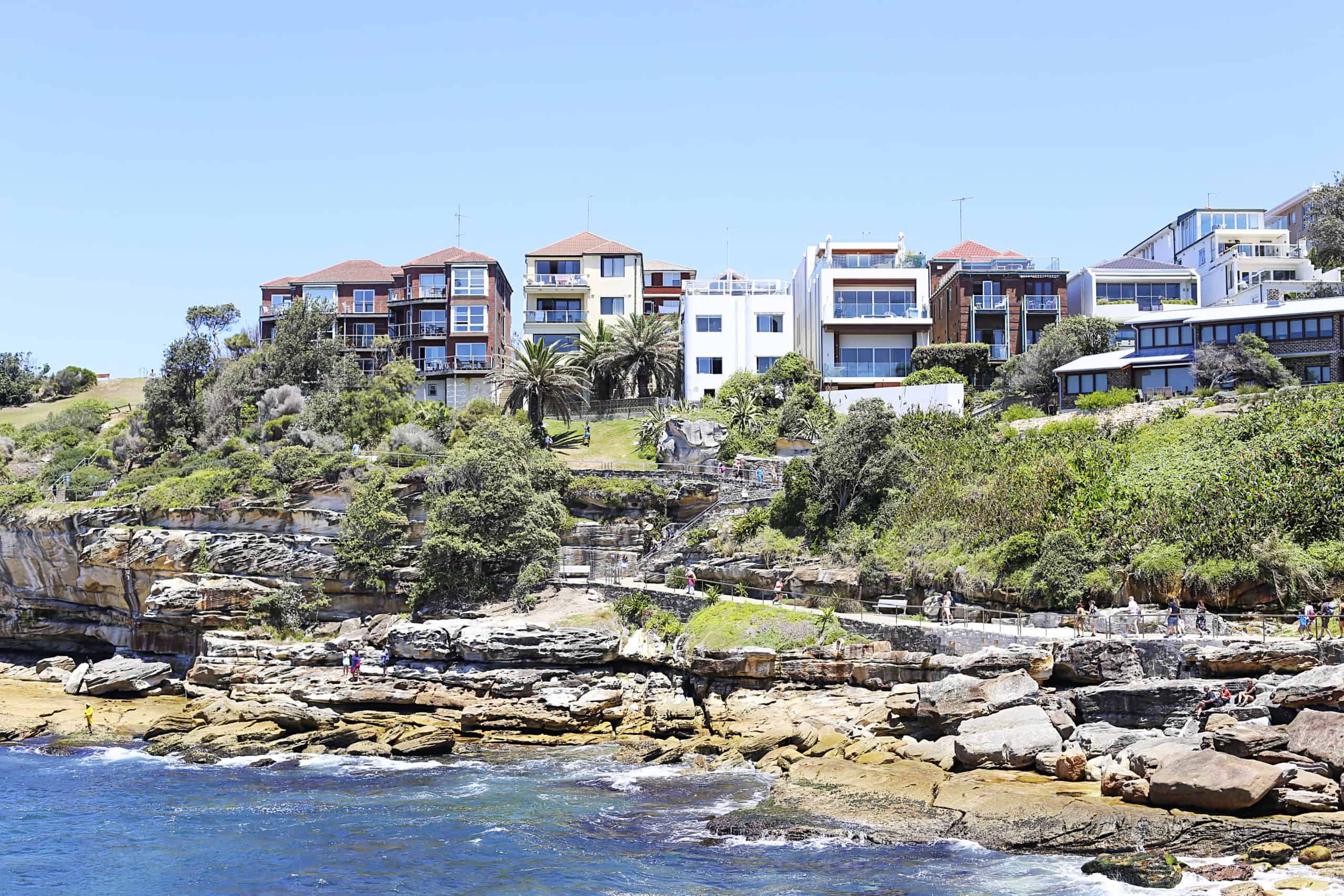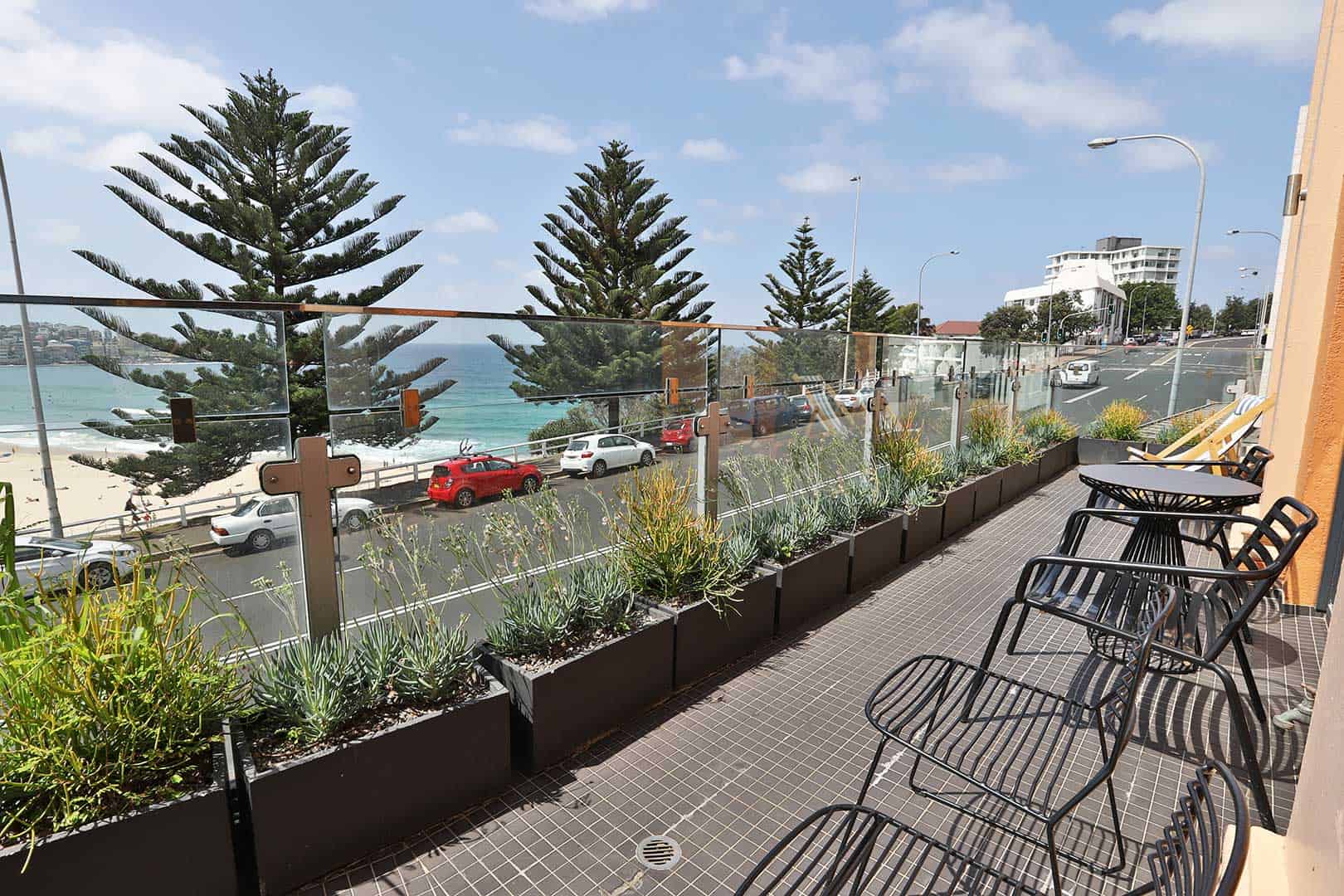Travelling from Europe to Australia can be exciting, but jet lag can quickly diminish the enthusiasm for your journey. So, if you are wondering how to get over jet lag from Europe to Australia – this article is here to help! From tweaking your diet to adjusting your sleep schedule, we go beyond the conventional advice to provide you with the most effective and science-backed strategies. By the end of this article, you’ll be equipped with the tools you need to tame the time zone beast and beat jet lag. Get ready to say goodbye to jet lag!
Key Takeaways
- Jet lag messes with your body’s internal clock and is worse when flying across multiple time zones, like from Europe to Australia, causing sleep issues, irritability, and more.
- Get ahead of jet lag by tweaking your flight schedule, gradually adjusting your sleep before the trip, managing light exposure, and staying hydrated.
- Bondi 38 Serviced Apartments provides fully furnished, spacious, and comfortable apartments at Bondi Beach with modern amenities for an unforgettable trip to Australia.
Understanding Jet Lag and Its Effects on Your Body
Jet lag is a common occurrence that can happen when we travel across multiple time zones. It happens when our internal body clock, or circadian rhythms, get out of sync with the new environment, leading to several symptoms such as difficulty sleeping, tiredness, irritability, difficulty concentrating, and digestive problems.
This desynchronisation is regulated by the suprachiasmatic nucleus (SCN), a part of the brain that affects sleep, body temperature, hunger, and more. Long-haul flights, such as those from Europe to Australia, often trigger jet lag, causing a disruption in our SCN. The impact of jet lag can go beyond just exhaustion, as it can also cause digestive issues, headaches, irritability, difficulty concentrating, and daytime sleepiness.
The severity of jet lag can vary depending on the direction of travel and the number of time zones crossed. For instance, travelling from east to west may result in less severe jet lag than travelling from west to east. Regardless of the direction, jet lag can significantly affect our sleep patterns, hormone release, and temperature regulation, making it important to take steps to manage it when travelling.
What is Jet Lag?
Jet lag, also known as desynchronosis, is a temporary disorder that occurs when our body’s internal clock, or circadian rhythm, is disrupted due to traveling across multiple time zones. This disruption can cause a range of symptoms, including fatigue, insomnia, digestive problems, and difficulty concentrating. Jet lag can affect anyone who travels across time zones, regardless of age or fitness level. When you cross multiple time zones, your body struggles to adjust to the new schedule, leading to a misalignment between your internal clock and the local time. Understanding jet lag and its effects on your body is the first step in learning how to manage it effectively.
Essential Guide to Getting Over Jet Lag from Europe to Australia
To overcome jet lag as you fly to Australia from Europe, follow these tips:
Tailor Your Flight Plan for Minimal Jet Lag Impact
To avoid jet lag, planning ahead even before boarding your flight is advisable. If you are flying to Australia, scheduling your flight to arrive in the late afternoon or early evening can help your body adjust more easily to the new night schedule. This approach allows you to unwind, have a meal, and get a good night’s rest rather than being hit with a full day ahead.
Another approach is to consider incorporating an overnight layover about two-thirds of the way to Australia in cities like Singapore, Bangkok, or Hong Kong. This break allows your body to adjust gradually, which helps reduce jet lag. On the plane, set your watch to the local time of the layover city, and after a good night’s sleep at an airport hotel, set it to Australia’s time zone. This mental adjustment to new time zones can make a significant difference.
Program Your Pre-Flight Routine to Reduce Jet Lag Severity
As your trip approaches, start adjusting your sleep schedule by shifting it to 15 minutes each day to align with the new time zone. This eases the transition and helps establish a new routine upon arrival. But it’s not only sleep that matters. You can also manipulate your exposure to light. For example, you can wear dark glasses or close window blinds during the day to reduce light when preparing for time zone changes and adjust your exposure to light earlier each day of the trip.
Moreover, before you start your journey, ensure you’re well-rested. Avoid sleep deprivation, as it only amplifies jet lag symptoms and makes adjusting to a new schedule harder. Staying hydrated is also crucial. Drink plenty of water and maintain skin hydration throughout the flight by bringing a travel-sized moisturiser and a leave-on recovery face mask in your hand luggage.
Adjust Your Sleep Schedule Before the Flight
To minimize the effects of jet lag, it’s essential to adjust your sleep schedule before your flight. Start by gradually shifting your bedtime and wake-up time to match your destination’s time zone a few days before your trip. This gradual adjustment helps your body clock align with the new time zone, making the transition smoother. Additionally, use light exposure to your advantage. Morning sunlight or a light therapy box can help regulate your circadian rhythm and signal to your body that it’s time to wake up. By proactively adjusting your sleep schedule and managing light exposure, you can help your body adjust more quickly to the new time zone and reduce the risk of jet lag.
Adopt These Onboard Tactics for Battling Time Zone Fatigue
When travelling by plane, it’s important to battle time zone fatigue by enhancing the quality of your sleep. Here are some tips to help you achieve that:
- Choose a window seat that is away from the galleys and lavatories to minimise disturbance.
- Use sleep accessories, such as a neck pillow and eye mask, to significantly improve the quality of your sleep during the flight.
- Dress comfortably in clothing that allows for unrestricted movement and easy-to-remove shoes.
- Create a comfortable sleep environment by using a blanket to block out light or bringing a familiar item, like a pillowcase, from home.
Techniques such as drinking herbal tea, practising muscle relaxation, and placing carry-on luggage under your feet can help you fall asleep. Ensure you sleep according to the new time zone to assist with circadian rhythm adjustment.
Stay Comfortable and Alert During the Flight
Staying comfortable and alert during the flight can significantly reduce the effects of jet lag. Choose a comfortable seat, preferably a window seat away from high-traffic areas like galleys and lavatories. Consider using a neck pillow to support your neck and promote better sleep. Avoid heavy meals and caffeine, as they can disrupt your sleep and digestion. Instead, opt for light, nutritious snacks that are easy on your stomach. Staying hydrated is crucial, so drink plenty of water throughout the flight. To improve your sleep quality, avoid screens for at least an hour before bedtime, as the blue light can interfere with your ability to fall asleep. By taking these steps, you can arrive at your destination feeling more refreshed and ready to adjust to the new time zone.
Sync with the Local Time From Your First Day in Australia
Upon arrival in Australia, start aligning yourself with the local time zone. Exposure to light helps reset your body’s circadian clock, improving your adaptation to the new time zone. Resist the urge to sleep during the day and stay active instead. Go for a walk, explore your surroundings, and keep your body moving.
If you absolutely must nap, limit it to a maximum of 20 minutes early in the day to avoid disrupting your nighttime sleep. In the evening, minimise light exposure and delay consumption of alcohol for a few hours to ensure better sleep quality and adjustment to the new time zone.
The Role of Nutrition in Overcoming Jet Lag
Your diet can significantly influence jet lag. If you schedule your meals according to the time zone of Australia, you can manage and overcome jet lag more effectively. Having a light dinner before the flight and a hearty breakfast upon arrival is recommended. By establishing a fixed meal schedule that emphasises a consistent breakfast time, you can reset your body’s circadian clock after arrival.
Eating nutrient-rich foods such as nut butter, avocado and leafy greens before takeoff and avoiding sweets, high-fibre, dairy-heavy, and ‘gassy’ fruits can minimise digestive discomfort and jet lag symptoms. Upon landing, consuming tranquillity-inducing foods like hot water with ginger, lemon, honey concoction, Brazil nuts, or cherries can promote sleep due to their calming effects and melatonin content.
Melatonin supplements, administered at the proper time, can help shift circadian rhythms and mitigate jet lag symptoms. Vitamin B complex, Vitamin C, and Vitamin D supplements each play a role in sleep regulation and may offer benefits for individuals dealing with jet lag.

Bondi Beach: The Perfect Place to Recover and Rejuvenate
After a long flight from Europe, the tranquillity and stunning views of Bondi Beach await you at Bondi 38 Serviced Apartments. Nestled at the forefront of Bondi Beach, these apartments offer a serene atmosphere and easy beach access right outside your door. It’s the perfect place to find solace and recover from your journey, providing the ultimate tranquil retreat.
Experience Supreme Comfort and Convenience at Bondi 38
At Bondi 38 Serviced Apartments, we prioritise your comfort and convenience. Every aspect of your stay is designed to ensure relaxation and recovery in utmost comfort. Our contemporary and luxuriously furnished apartments are crafted to meet your needs and exceed your expectations.
At Bondi 38 Serviced Apartments, we take pride in enhancing your stay with a range of premier amenities. Indulge in the complimentary luxuries high-speed WiFi, ensuring entertainment and connectivity throughout your stay. The convenience continues within, with fully equipped kitchens that offer the freedom to prepare meals tailored to your taste and schedule. Reserve your stay today and experience the luxury of Bondi 38!

Benefits of Staying at Bondi 38 Serviced Apartments
- Front row views of the stunning Bondi Beach.
- Direct access to the vibrant cafe and bar scene at the beach.
- Modern, fully self-contained apartments with luxurious appointments.
- Keyless entry for seamless access.
- Complimentary WiFi to keep you entertained and connected.
- Well-equipped kitchen and laundry facilities are available for your convenience.
- Flexible booking and cancellation policies.
Book your stay at Bondi 38 Serviced Apartments and transform your post-travel recovery into an exquisite, rejuvenating experience. Enjoy the best of Australia in style!
Establish a New Routine Post-Arrival
As you bask in the Australian sun and enjoy the beach, remember to:
- Set up a routine corresponding to the new time zone to keep your body clock balanced
- Engage in light exercise
- Consume a protein-rich meal with greens or a carbohydrate-rich meal like wholewheat pasta.
This helps maintain energy until bedtime post-long haul flight, especially during early morning arrivals when flying east.
To adjust to Australia’s zone and cure jet lag, it is helpful to adapt your sleep patterns by waking up and going to bed at appropriate local times. To aid your body’s transition, it is best to avoid scheduling important activities on the first day after your arrival and be patient with your body’s adjustment process. Remember, your body needs time to adjust to the new environment and routine.
Try These Activities For A Memorable Trip to Australia
Now that you’ve effectively managed your jet lag, you’re ready to explore and enjoy the wonders of Australia. Luckily, there is no shortage of activities to keep you engaged. You could attend performances at the Sydney Opera House, explore the natural beauty of the Blue Mountains, or take a leap and learn to surf at Bondi Beach.
For culture enthusiasts, there are plenty of galleries showcasing indigenous art in Bondi Beach. Alternatively, you could attend Art After Hours at the Art Gallery of New South Wales for an evening of workshops, talks, and entertainment.
Flying East or West Makes a Difference
Flying east or west can make a difference in the severity of jet lag symptoms. When you fly east, you lose time, which can make it more challenging to adjust to an earlier time zone. This often results in more severe jet lag symptoms, such as difficulty falling asleep and waking up earlier than desired. On the other hand, flying west means you gain time, which can be easier on your body clock. However, it’s still important to adjust your sleep schedule and stay comfortable during the flight to minimize the effects of jet lag. Regardless of the direction, understanding how your body responds to time zone changes and taking proactive steps can help you manage jet lag more effectively.
Frequently Asked Questions
Is jet lag worse coming back from Europe?
Yes, jet lag is generally worse when coming back from Europe due to the asymmetry of circadian rhythms and eastward travel.
How do you deal with jet lag from the US to Australia?
To deal with jet lag from the US to Australia, try these tips: eat meals at the right times, avoid napping, stay hydrated, get sunlight, consider a melatonin supplement, adjust your bedtime before your flight, and exercise upon arrival. These steps can help minimise the effects of jet lag.
How long does it take to get over jet lag from Europe to Australia?
It can take anywhere from a few days to a few weeks to get over jet lag when travelling from Europe to Australia, with the body needing approximately one day to adjust for each hour of time zone change. So, be patient and give yourself time to acclimate.
What causes jet lag?
Jet lag occurs when our body clocks, or circadian rhythms, get out of sync with a new environment, especially when travelling across multiple time zones.
Final Thoughts
Jet lag can temporarily disrupt your travel plans. However, it does not necessarily have to spoil your overall experience. By understanding how jet lag occurs and affects your body, you can plan your flight accordingly, adopt pre-flight and onboard strategies, and establish a new routine post-arrival to minimise its impact. Maintaining proper nutrition is also essential. Additionally, choosing Bondi 38 Serviced Apartments to recover and rejuvenate can lead to a smoother transition into the Australian time zone. By following these strategies, you can take control of jet lag and fully enjoy and adapt to the splendour of Australia. Make your reservation with us today at Bondi38 Serviced Apartments to secure your trip to Australia.















